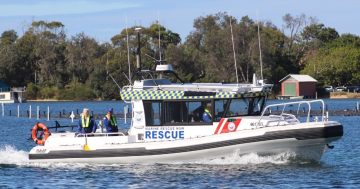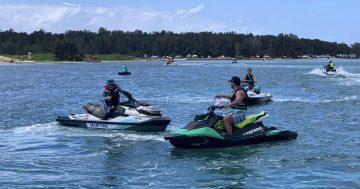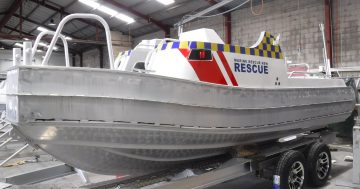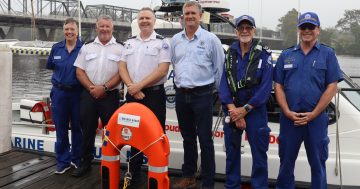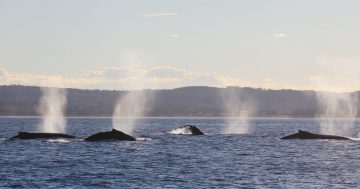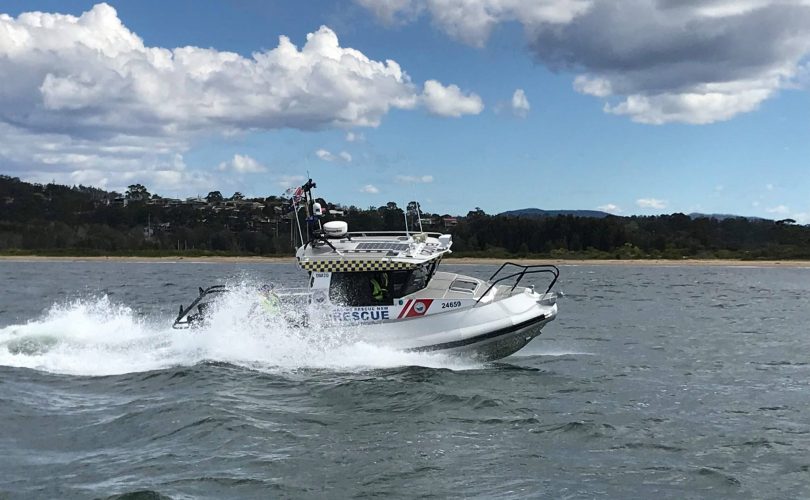
Marine Rescue crews will be out on the water this Easter long weekend. Photo: Marine Rescue Batemans Bay.
The Easter long weekend is the perfect excuse to launch the boat and enjoy our coastline, but holidaymakers are being reminded of the dangers of our waters.
The southern region of NSW was heavily impacted by the Black Summer bushfires of 2019/20 and ongoing rain and flooding since means debris continues to flow into local waterways.
“The water is still quite brown off-shore quite some ways,” Marine Rescue Southern Zone duty operations manager Glenn Sullivan said.
“Trees that were burned down are still being picked up and washed into the rivers.”
Extra Marine Rescue crews will be on the water this Easter long weekend to monitor conditions and help out vessels in need.
But Mr Sullivan has stressed boaters are the ones who need to take responsibility and consider several factors before they launch.
“We have a great deal of off-shore fishing in this region, so boats have to cross coastal bars, which can be quite dangerous at the best of times,” he said.
Those needing to cross the coastal bars need to take into account weather conditions when they head out and what’s predicted for when they want to return to shore.
“Just this Monday [11 April] there was a vessel in Narooma, a 4.2-m tinny, that couldn’t come back into shore and couldn’t make it to the nearest safe port, which was Bermagui Harbour,” Mr Sullivan said.
“They ended up having to spend the night on Montague Island off Narooma and the next day they had to travel to Bermagui.
“You need to continue to monitor the situation when you’re out there and be prepared to dump your plans for the day; don’t put them ahead of your safety.”
Those towing water skiers or other recreational pursuits are also reminded to take care of inlets and rivers.
“The driver is the master of the boat and is responsible for keeping a proper lookout,” Mr Sullivan said.
“They need to make sure they’re going at a speed that means they can stop safely if they spot a tree or something in the water.”
Transport for NSW has also stressed the importance for experienced and novice boaters alike to take care in the water this Easter long weekend.
“After all the bad weather we’ve had across the state recently, we know people are keen to get out on the water this Easter break,” Safety, Environment and Regulation deputy secretary Tara McCarthy said.
“But we want to make sure they plan their trip, prepare everything that is needed and predict what might happen.”
While they may have plenty of experience, she pointed out that boaters aged 70 and above were over-represented in boating fatalities.
“[They] account for 27 per cent [of fatalities] over the 10-year period to June 2021, despite holding only 8.6 per cent of boat licenses,” Ms McCarthy said.
“Even the most experienced boaters face unexpected risks on the water.”
Boaters are being urged to check the weather forecast before they head out, ensure they have the right gear that’s in working order, including a life jacket, make sure they understand how to manage water risks and know their limits.
“We love seeing people enjoy our beautiful waterways, but we need to ensure everyone, no matter how experienced, can enjoy [boating] in the safest way possible,” Ms McCarthy said.
“We’re working towards reducing the number of lives lost, with our ultimate goal being to have zero fatalities on NSW waterways by 2056.”
Boaters are also being reminded to log on with Marine Rescue on VHF Channel 16 or the Marine Rescue app before heading out on the water.
In the 12 months to 30 June 2020, 25 people were killed, 39 suffered severe injuries and 284-boating related incidents were reported to Transport for NSW.
Most fatal incidents in this reporting period were on smaller vessels measuring less than 6 m in length, and the key contributing factors were: lifejacket not worn/functional (60 per cent), hazardous waters (50 per cent) and lack of judgement (50 per cent).



